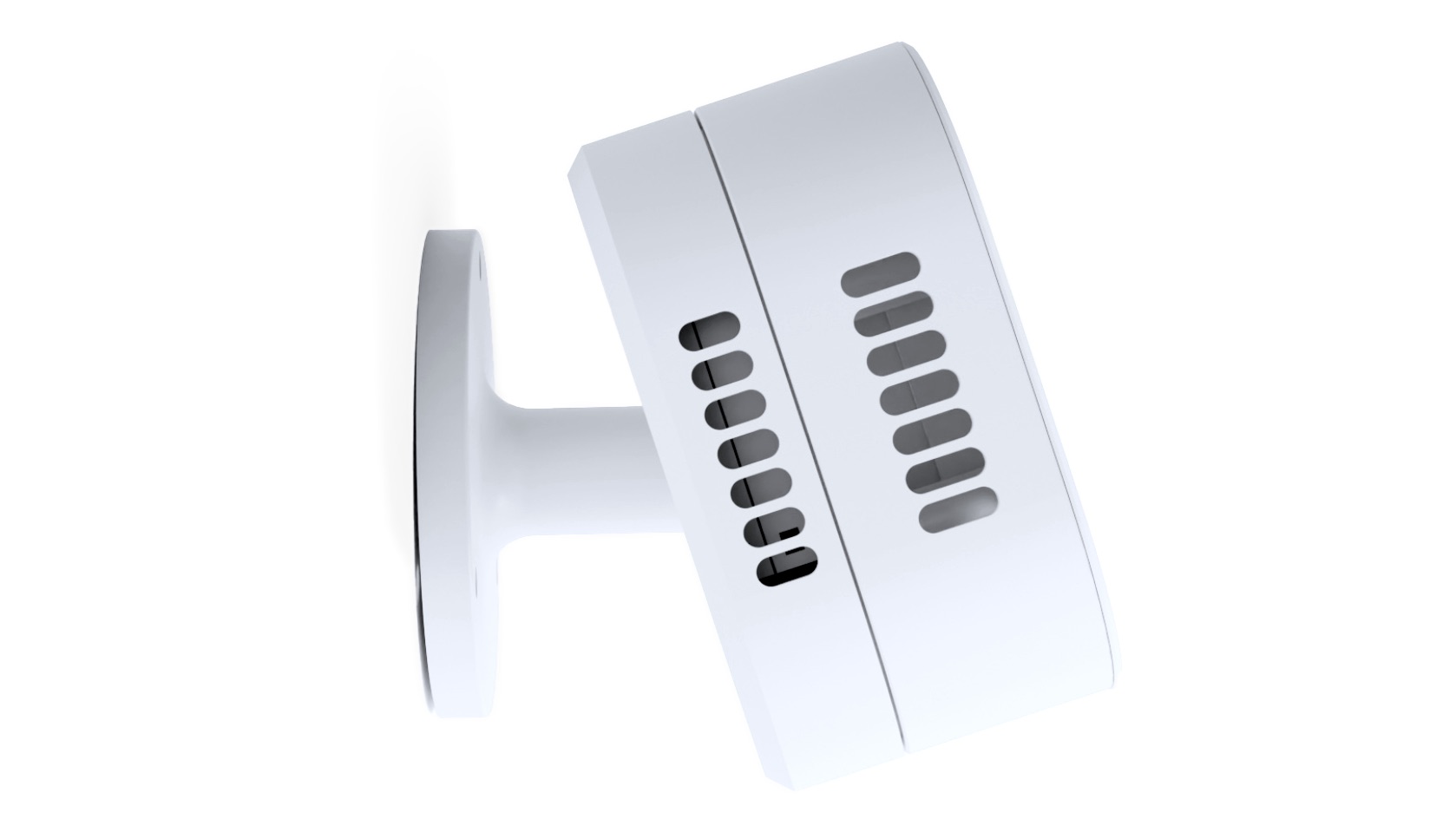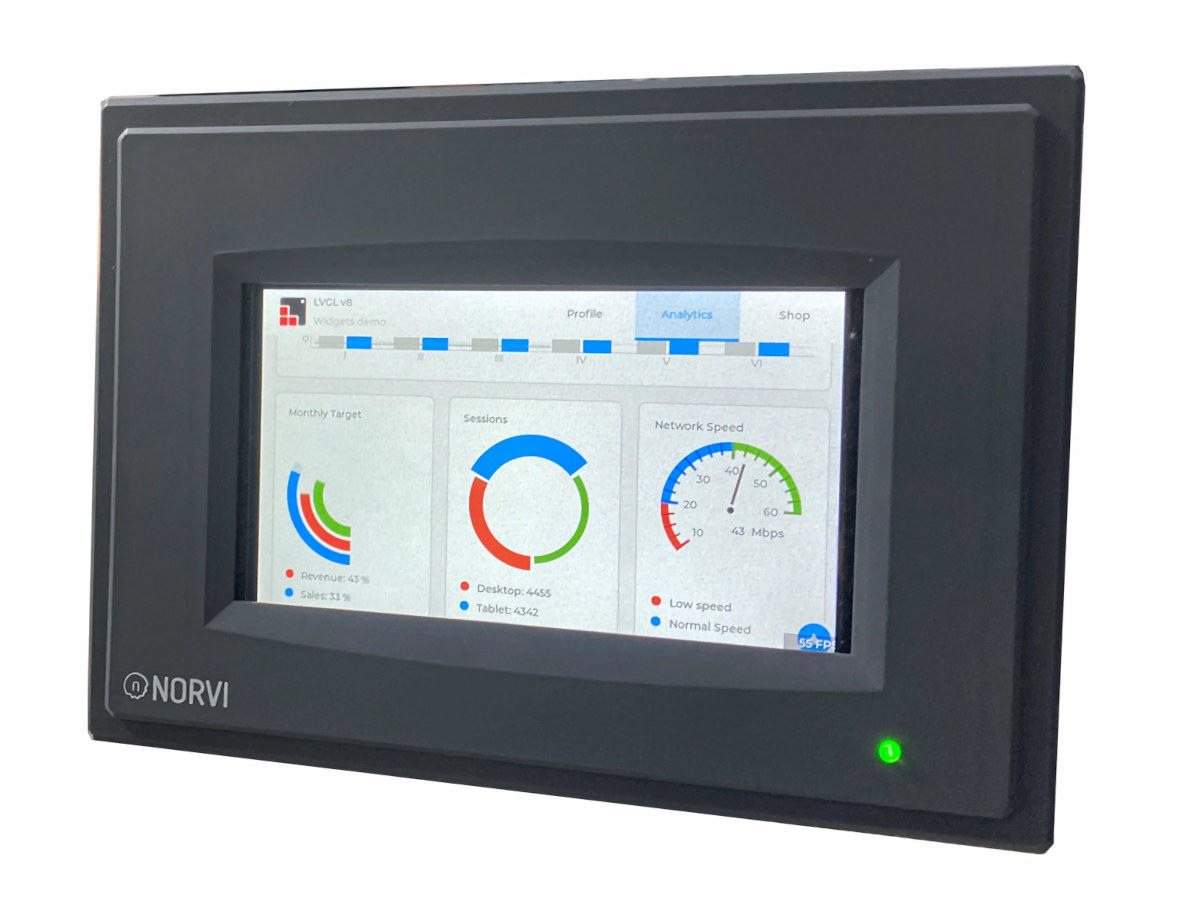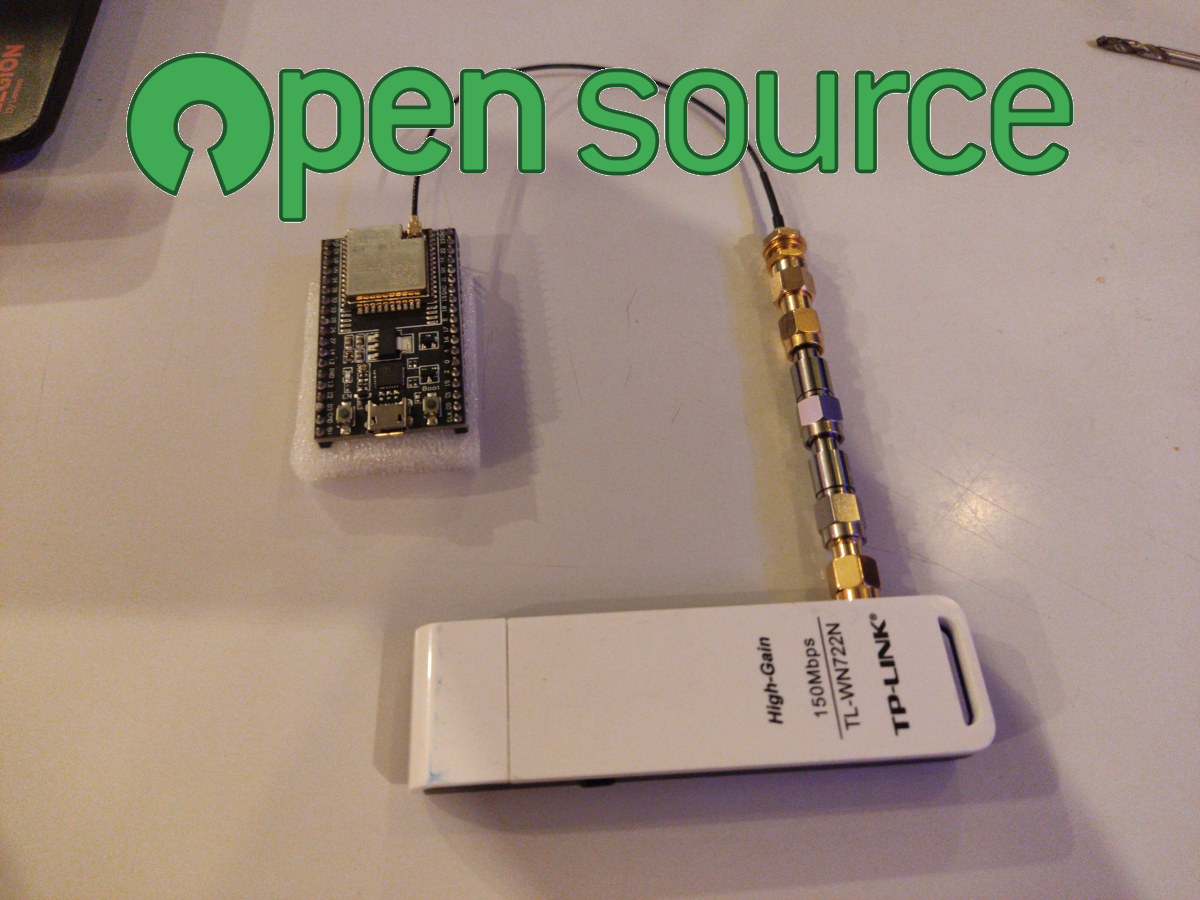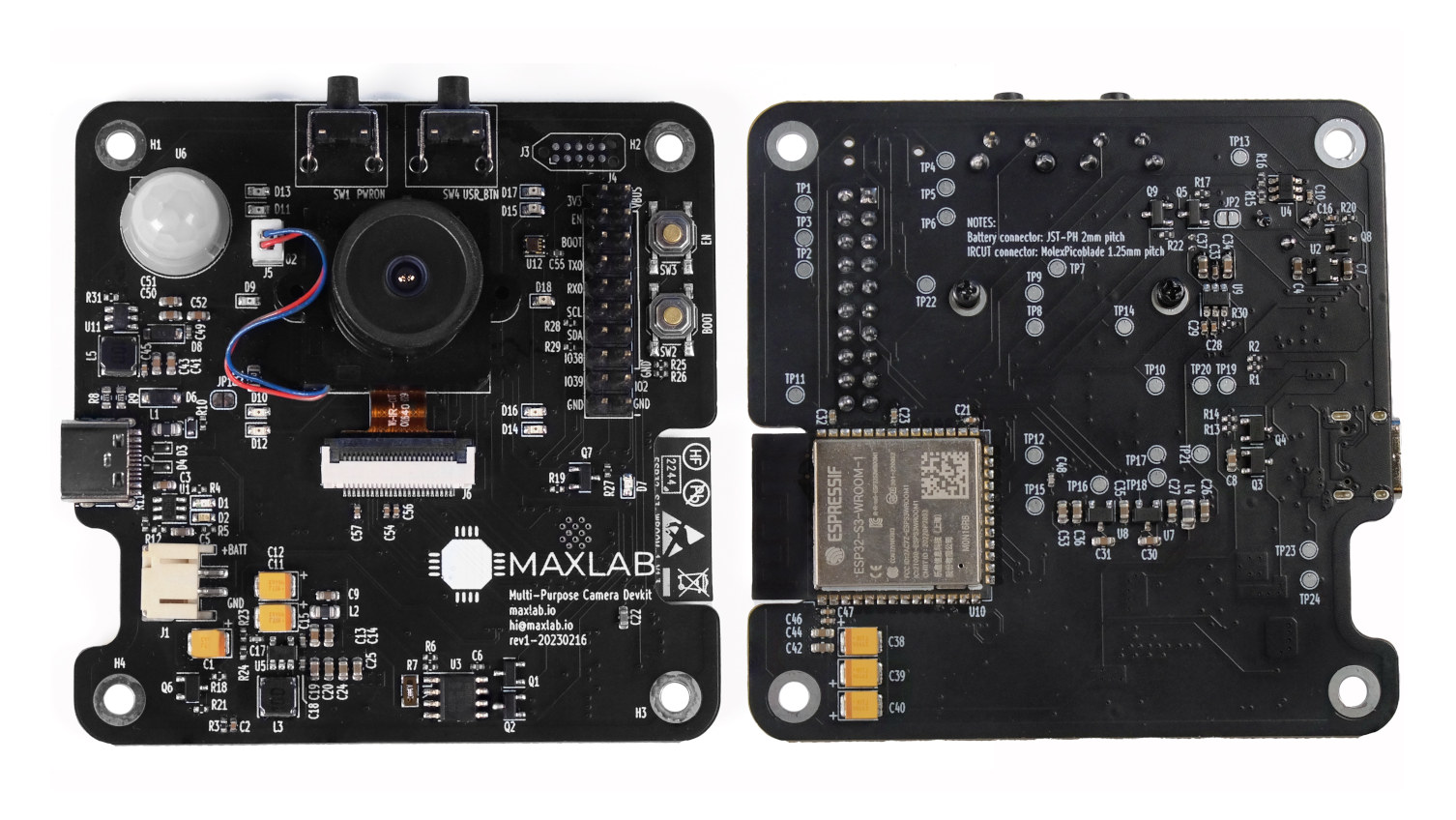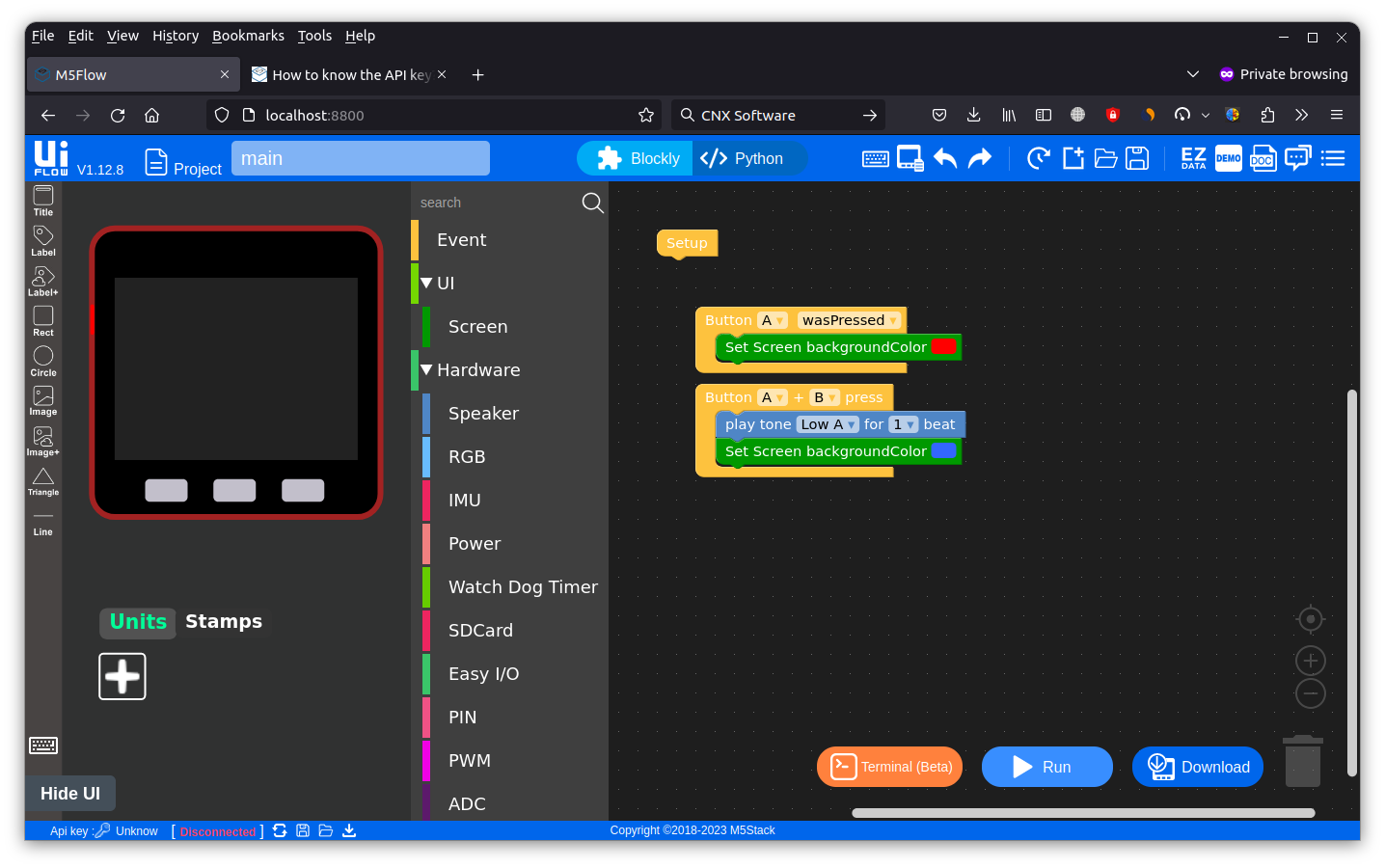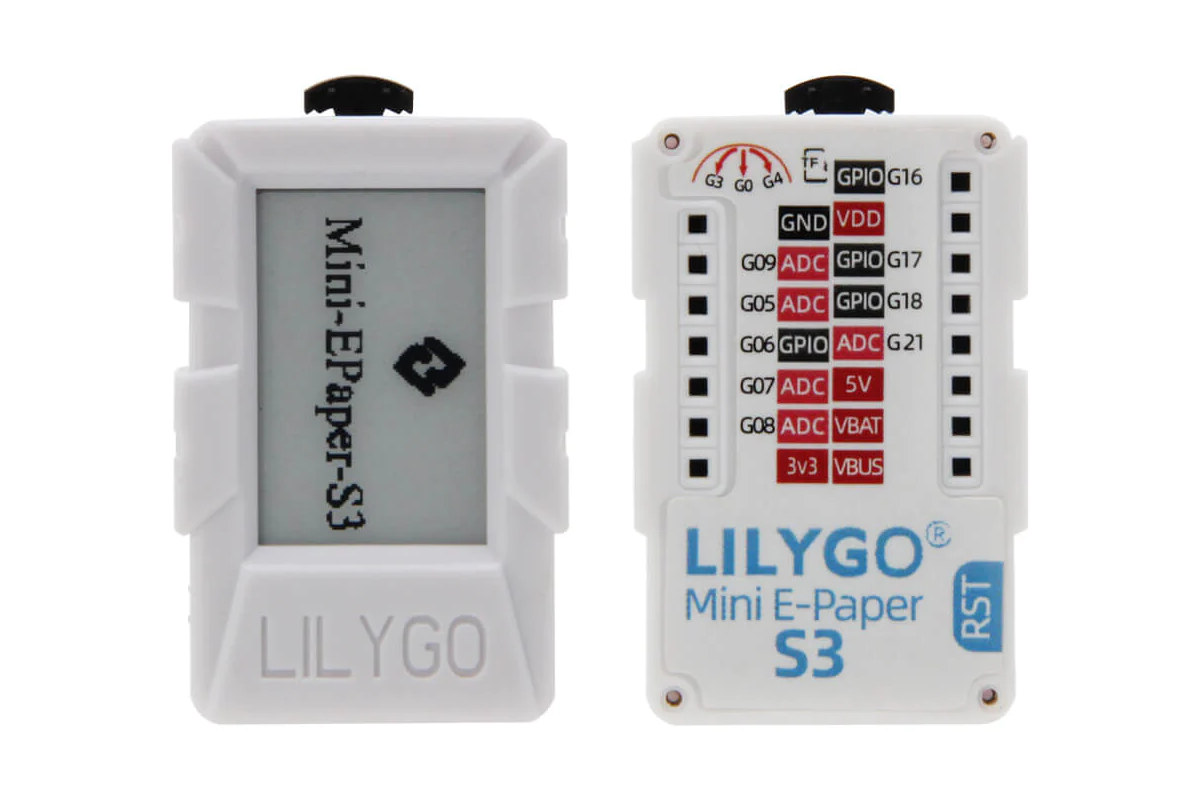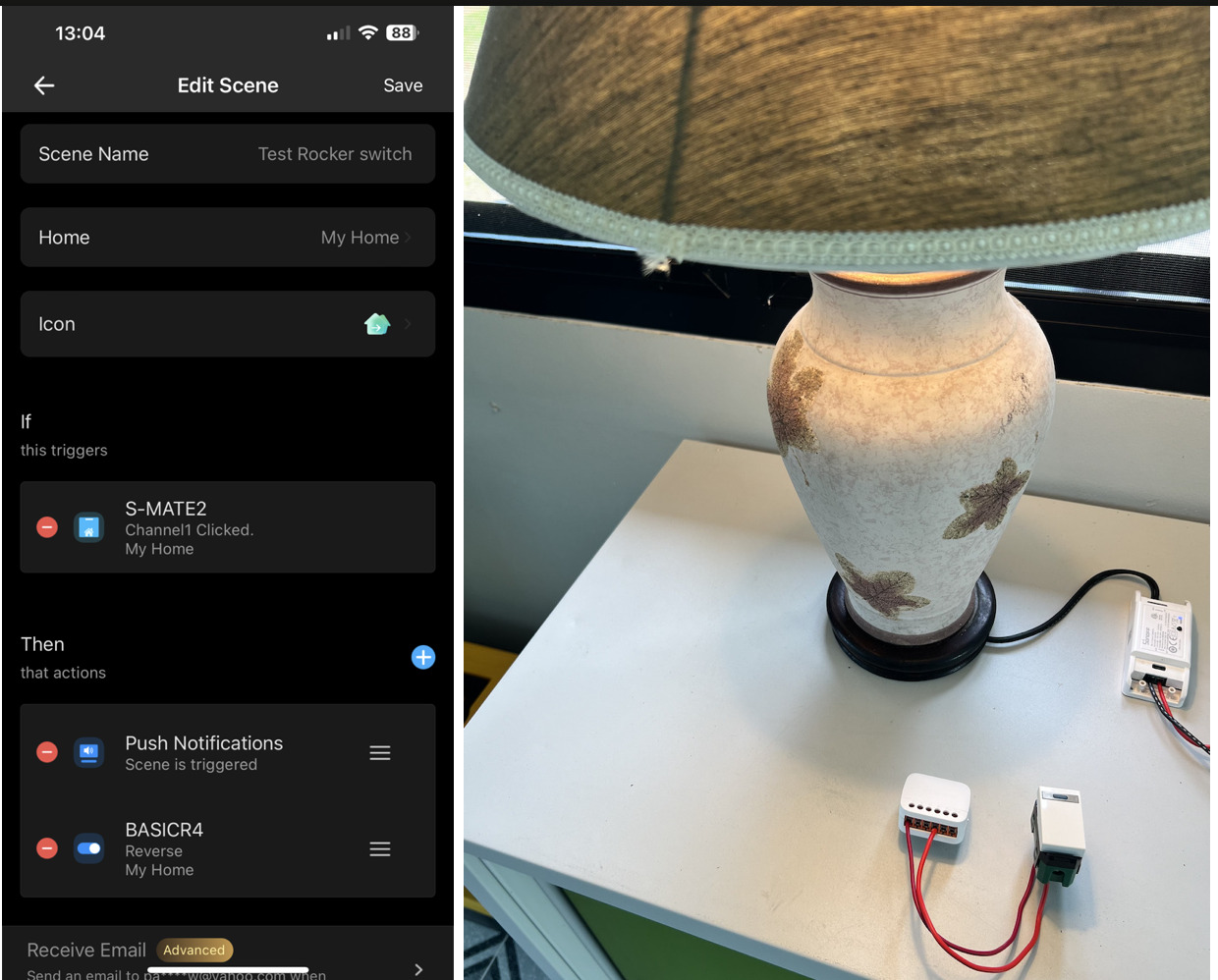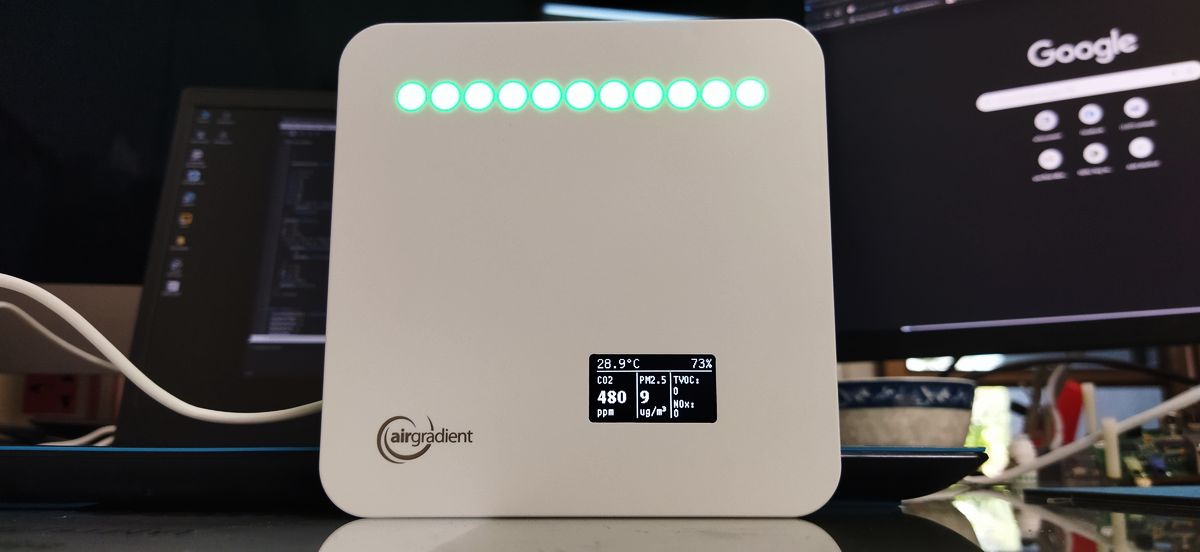RoomSense IQ is a modular room monitor for presence-based home automation based on the ESP32-S3 module with Bluetooth Wi-Fi connectivity. It uses physical presence detection to automate your smart home devices. It comes with multiple sensors that can be used to detect human activity and track ambient light, temperature, and humidity levels. It uses mmWave radar technology to determine when rooms are empty and when they are occupied. It also features built-in temperature, humidity, and light sensors for indoor climate monitoring and control. Rather than relying on schedules, or voice detection, RoomSense IQ triggers automations or alerts based on whether people are in a room or not. It is therefore possible to set it to automatically turn off lights or air conditioning in rooms that are empty to save on energy. In addition, the device offers distance to target measurement that can be adjusted to trigger certain actions. RoomSense IQ […]
NORVI ESP-HMI-5C ESP32-based HMI features a 5-inch resistive touchscreen display
NORVI ESP32-based human-machine interface (HMI) solution features a 5-inch LCD with a resistive touchscreen driven by an ESP32-S3 wireless module and support for the LVGL library. NORVI previously brought us some headless ENET industrial controllers including some with Ethernet beside the WiFi connectivity built into the ESP32 microcontroller, but the NORVI HMI device is the first product from the company with a proper display suitable for HMI applications. NORVI HMI (ESP-HMI-5C) specifications: Wireless module ESP32-S3-WROOM32-1-N16R8 MCU – ESP32-S3 dual-core LX7 microprocessor @ up to 240 MHz with Vector extension for machine learning, 512 KB SRAM Memory – 8MB octal SPI PSRAM Storage – 16MB flash Connectivity – WiFi 4 and Bluetooth 5 with LE/Mesh PCB antenna Storage – MicroSD card slot (SPI interface) Display – 5-inch LCD Display with Resistive Touch Audio – Built-in Buzzer Communication interfaces – Ethernet (W5500) and RS485 I/Os 4x digital inputs – Range 18V to 32V […]
ESP32 may soon get an open-source WiFi MAC layer
Most, if not all, WiFi hardware relies on closed-source binary blobs including ESP32 wireless MCU, but there’s now work underway to reverse engineer a WiFi MAC layer for the ESP32 to make it a truly open-source platform. Espressif ESP32 wireless microcontrollers already have an open-source framework (ESP-IDF) and toolchain, people can customize the code to some extent, but this excludes the wireless bits (Wi-Fi, Bluetooth, low-level RF functions) that are distributed as closed-source precompiled libraries integrated into the firmware. There were some efforts to provide an open-source stack for the BL602 chip but it never went anywhere, and the ESP32 may become the first target with an open-source driver without any blobs, excluding FPGA-based projects such as OpenWiFi. The early-stage implementation currently supports the following features: Sending WiFi frames Receiving WiFi frames Send an ACK packet as a reply to packets that are sent to the ESP32 Connect to an […]
Tokay Lite – A battery-powered no-code AI camera based on ESP32-S3 WiSoC (Crowdfunding)
Maxlab’s Tokay Lite is an OHSWA-certified AI camera based on ESP32-S3 WiFI and Bluetooth SoC that can be used for computer vision (e.g. facial recognition & detection) and robotics applications without the need to know programming languages since a web interface is used for configuration. The WiFi and Bluetooth AI camera also features night vision with four IR LEDs, an IR cut filter, light and PIR motion sensors, a 20-pin expansion connector with SPI and UART, support for an external RTC, and can take power from USB-C or a LiPo battery. Tokay Lite specifications: Wireless module ESP32-S3-WROOM-1 MCU – ESP32-S3 dual-core LX7 microprocessor @ up to 240 MHz with Vector extension for machine learning, 512 KB SRAM Memory – 8MB PSRAM Storage – 8MB SPI flash Connectivity – WiFi 4 and Bluetooth 5 with LE/Mesh PCB antenna Certifications – FCC/CE certification Camera OV2640 camera sensor (replaceable) via DVP interface Image Capabilities: […]
M5Stack releases local server implementations of UIFlow visual programming Web IDE
Visual programming is now a very popular method to teach programming to kids and M5Stack relies on UIFlow for their ESP32-based IoT development kit. Like most other companies, M5Stack provides either a Web IDE accessible from their server or a desktop program available for Windows, MacOS, or Linux, but the company has now released a local server implementation that allows users to run a Web IDE instance in their local network. The local server is available for Windows 11 x64, MacOS, Ubuntu 22.04, and Linux Arm (e.g. Raspberry Pi), so I downloaded the Ubuntu version to give it a try on my laptop. Somehow the Ubuntu release is full of Windows DLLs, but let’s ignore that for now, and the README.txt tells us to install one dependency and run the program as follows:
|
1 2 |
apt install ttf-mscorefonts-installer ./UIFlow.Server.Desktop |
A window pops up letting us start or stop the server. It can be accessed with […]
LILYGO Mini E-Paper Core IoT controller gets ESP32-S3 wireless microcontroller
LILYGO Mini E-Paper Core has gotten an upgrade to the ESP32-S3 wireless microcontroller. The IoT controller was first introduced in 2021 with an ESP32-PICO-D4 system-in-package, a 1.02-inch E-Paper display, and a few GPIOs on the back, and the company kept the same design for the ESP32-S3 model called “Mini E-Paper Core S3”. The tiny ESP32-S3 IoT controller can still be used for integrated into your own project, and the company also provides several shields with nRF24L01 2.4GHz wireless or 433/868 MHz “LoRa” connectivity to transform the device into a longer range IoT device. Mini E-Paper Core S3 specifications Wireless SoC – Espressif Systems ESP32-S3FN4R2 CPU – Dual-core Tensilica LX7 @ up to 240 MHz with vector instructions for AI acceleration Memory – 512KB RAM, 2MB PSRAM Storage – 4MB flash Wireless – 2.4 GHz WiFi 4 and Bluetooth Storage – MicroSD card socket Display – 1.02-inch e-paper display with 128×80 […]
Review of SONOFF BASICR4 Smart Switch and S-MATE2 Smart Remote Control
We’ve received two new devices from SONOFF for testing, namely the BASICR4 Smart Switch and the S-MATE2 Smart Remote Control. For those familiar with SONOFF devices, the Basic series is well-known as it was one of the initial products SONOFF introduced to the Smart Home market. It’s a Wi-Fi switch that can be used for various purposes, including controlling lights, fans, and other electrical devices. The BASICR4 model enhances capabilities while reducing costs compared to its predecessor. The S-MATE2, on the other hand, is the second version of a simple Remote Controller powered by batteries. It wirelessly connects to other SONOFF devices that support the eWeLink Remote Gateway feature, enabling full control within the same ecosystem. This expands its usability across different devices. Let’s delve into the details. SONOFF BASICR4 Introduction The Basic series has been a long-standing Wi-Fi Switch family allowing control of electrical devices through the eWeLink app […]
AirGradient ONE Kit Review – An open-source indoor air quality monitor
The product we are reviewing today is the “AirGradient ONE” air quality monitor kit which is an updated version of the earlier AirGradient air quality monitor. The device is equipped with sensors from Sensirion and Plantower, allowing it to measure many air quality parameters such as CO2, PM2.5, TVOCs, NOx, temperature, and humidity. It is an indoor air quality monitor that is both open-source software and open hardware. This means that the Arduino source code, schematic diagrams, PCB, and 3D models of the enclosure are available to developers. AirGradient ONE DIY Kit Unboxing The device was packaged within a cardboard box, with a greeting card from the manufacturer. The card features a QR code linking to a webpage with the installation guide. Since I requested the Kit version (there’s also a fully assembled model), some sensors were not pre-assembled and they were well-packaged in separate seals. The main PCB was […]


